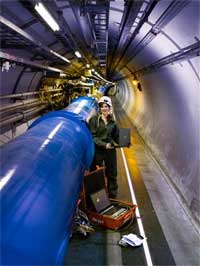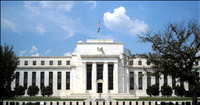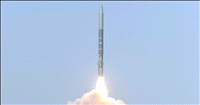World’s largest science experiment begins with the powering on of the LHC
10 Sep 2008
 Since you are still reading this article, it's obvious that the world did not end when the Large Hadron Collider (LHC) switched on today for the first time a few hours ago.
Since you are still reading this article, it's obvious that the world did not end when the Large Hadron Collider (LHC) switched on today for the first time a few hours ago.
Considering that today's start-up of the LHC merely involved protons whizzing about the 30-km long tunnel, the end of the world didn't seem particulalry likely, either. (See: LHC, world's largest science experiment set to commence on Wednesday)
The more scientifically inclined amongst the doomsayers would rather wait for the momentous day when opposing proton streams collide in the LHC to recreate conditions similar to those that scientists believe existed within seconds of the birth of the Universe. And, even though that day is not far off, 21 October to be precise, scientists dismiss all doomsday scenarios as completely implausible.
"Five, four, three, two, one, zero - nothing," joked Lyn Evans, leader of the LHC project, before a fuzzy dot appeared on a monitor.
It was 9.30 am local time when a stream of protons was introduced into a short stretch of the circular underground racetrack, buried in the Jura Mountains on the Franco-Swiss border. The fuzzy dot registered their arrival, and then - well, nothing else. But to the scientists who have devoted their working lives to the project, it was a moment of consummation.
Proton streams were then introduced into more and more of the machine until less than an hour later - far earlier than predicted - a stream whizzed around the entire circumference of the particle accelerator at a shade under the speed of light. The LHC had passed its first crucial landmark.
Scientists in the LHC's control room, a few kilometres outside Geneva, enthusiastically burst into applause. They will now get a proton beam to travel in the opposite direction before beginning the work of smashing sub-atomic particles together in an effort to discover the secrets of the Universe.
After the euphoria of the launch, the basic question remains: "How real, or imagined, are the dangers associated with the LHC?" The claimed dangers include doomsday scenarios involving the production of stable micro black holes or the creation of hypothetical particles called strangelets.
The potential risks of these unprecedented experiments were reviewed in 2003 by the LHC Safety Study Group, a group of independent scientists, who concluded that, like current particle experiments such as the Relativistic Heavy Ion Collider (RHIC), the LHC particle collisions pose no conceivable threat.
A second review of the evidence commissioned by CERN in 2008 reaffirmed the safety of the LHC collisions in light of further research conducted since the 2003 assessment. The 2008 report was reviewed and endorsed by CERN's governing body and by the Division of Particles & Fields of the American Physical Society and was published in the Journal of Physics.
It concludes that any doomsday scenarios at the LHC could be ruled out because the physical conditions and events that would be created in the LHC experiments occur naturally in the universe without hazardous consequences.
All these assertions ought to allay the fears of any doubtful individual. However, one man -- German biochemist Otto E Rössler -- has continued in his steadfast opposition to the LHC, and even taken legal recourse to stop the experiment.
In June 2008 Rössler emerged in the public eye with an open letter as one of the strongest critics of the LHC proton-collision experiment, trying to raise awareness of the possibility of creating human-made uncontrollable mini black holes with assumed exponential growth, which might get trapped in Earth's gravity due to their slowness of movement compared to the natural phenomenon of proton collisions with cosmic rays.
He based his warnings on an obsolete proposition made by Max Abraham in 1912 surrounding Albert Einstein's theory of relativity as well as his own, yet theoretically rejected, theorem and its implications. He also questioned the existence of the Hawking radiation, which in theory should lead to the decay of micro black holes. A majority of experts in these fields dismissed his claims as substantial misconceptions of the general theory of relativity, as well as being inconsistent and disproved through measurement experiments.
Now that the first step in the momentous experiment has been taken, it is clear that the German scientist's fears have not found resonance amongst his colleagues. One also wonders, even if Rössler is proved right, who will be around to verify his claims?






























